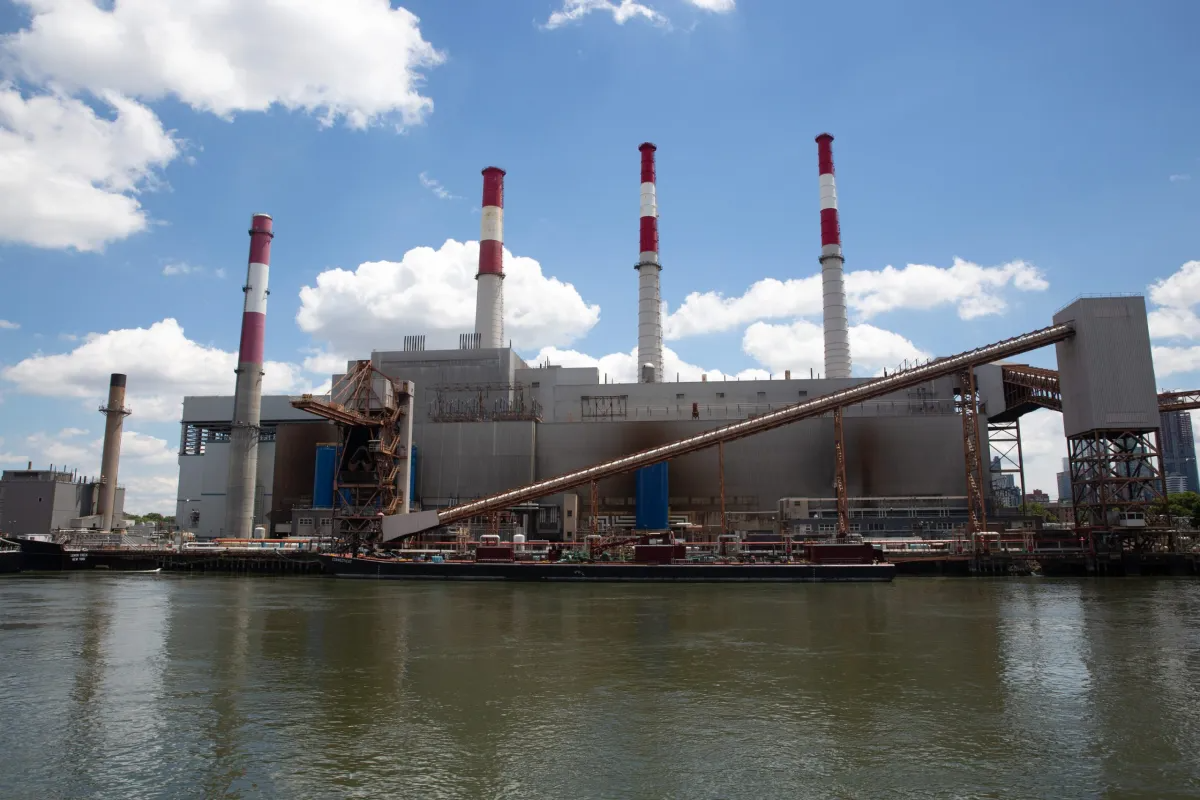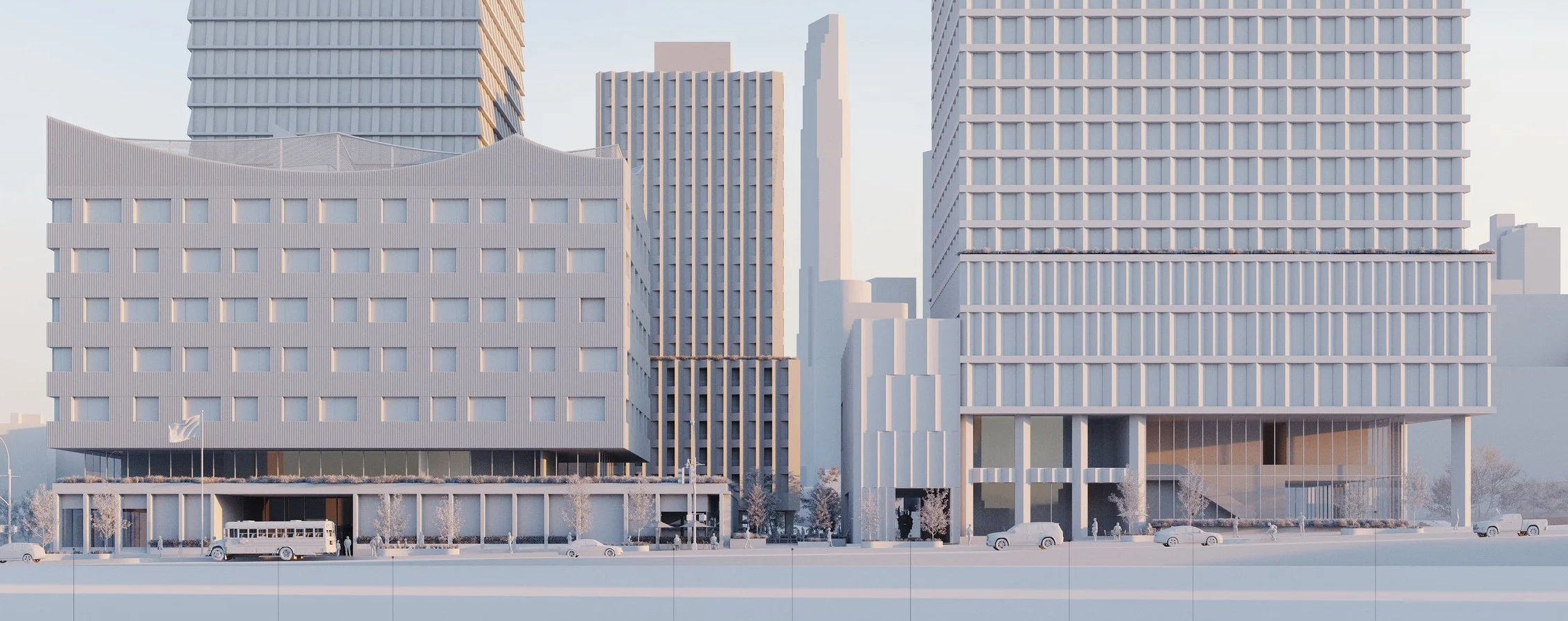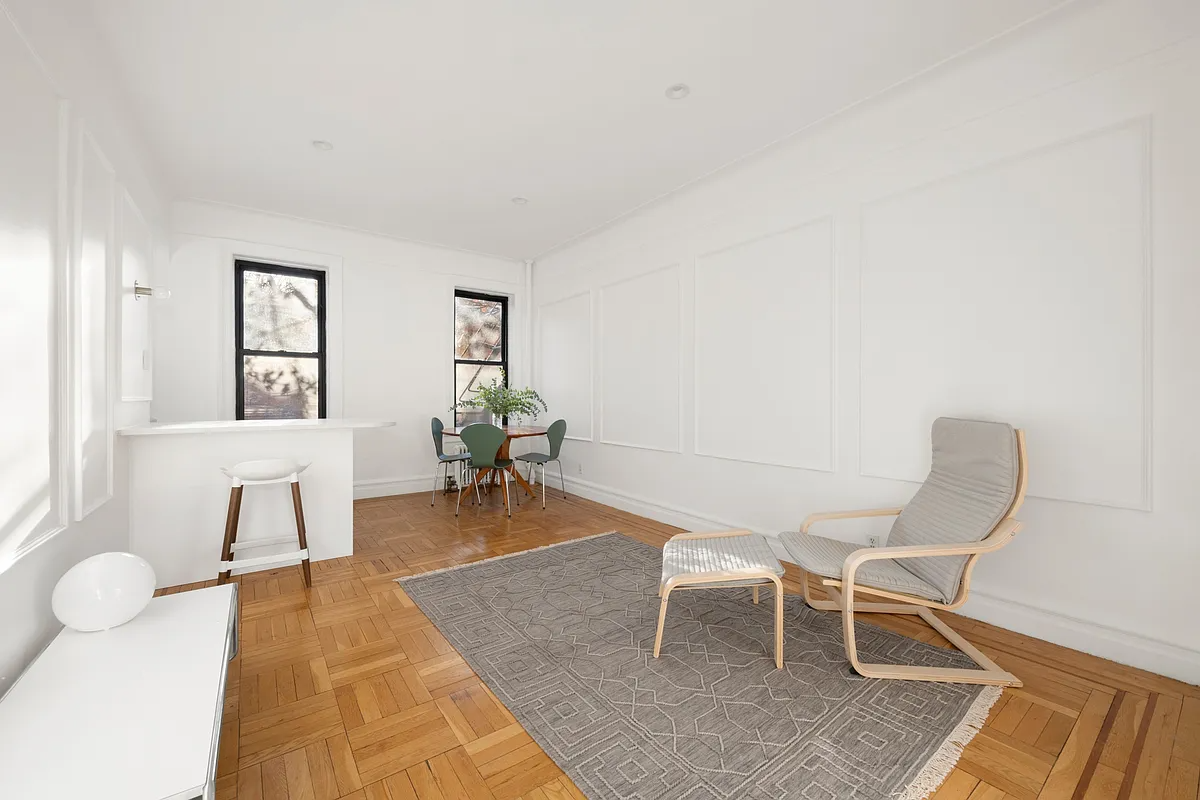DoBro Redevelopment Not So Great for Everyone
Not everybody is profiting off the Downtown Brooklyn boom, according to a recent report. Families United for Racial and Economic Equality (FUREE) and the Urban Justice Center conducted surveys of 61 small businesses in Downtown Brooklyn over the past year and found 35 have since moved or gone under. Many of the closures were attributed…


Not everybody is profiting off the Downtown Brooklyn boom, according to a recent report. Families United for Racial and Economic Equality (FUREE) and the Urban Justice Center conducted surveys of 61 small businesses in Downtown Brooklyn over the past year and found 35 have since moved or gone under. Many of the closures were attributed to four large projects &mdash City Point, Al Laboz’s planned Willoughby West tower, Stahl Real Estate’s 50-story office tower, and the planned Willoughby Square Park &mdash and the decrease in daytime business as office towers were emptied for residential development. Three-quarters of the owners surveyed are immigrants, 64 percent non-white, and 23 percent women.
The report, “Out of Business,” points out that Fulton Mall was already one of the city’s most successful retail corridors with 100,000 daily shoppers and $100 million in annual sales. In fact, a prominent local broker explained to us that Fulton Mall’s retail space is so lucrative that landlords actually removed stairwells and elevators in many of the buildings to create more ground-floor space, which now rents at between $150 and $300 per square foot (we were wondering why all the unsightly boarded-up windows). He said residential and low-end office tenants who would have rented out the upper levels were more troublesome and less lucrative, so landlords simply boarded up the windows and stopped maintaining those floors. FUREE co-director Ilana Berger suggested landlords re-open that less expensive space to small business owners, many who had already been paying prime ground-floor rates, as one way to maintain Fulton Mall’s diversity. But she acknowledged that after decades of neglect, renovation would be costly. Berger said she also tried to meet with the City Point developers to help secure space for displaced and aspiring small businesses owners in the tower’s 500,000 square feet of planned retail, but was met with disinterest. Click through for stories on some of the businesses profiled in the report, and the Downtown Brooklyn Partnership’s response…
Alas, the report alludes, the new residents and office tenants the city hopes to attract don’t generally shop at the same book and apparel stores; they don’t get their hair and nails done at the same places; and they want a different crop of restaurants. And the landlords (only five of the entrepreneurs surveyed owned their store or building) want to cash in on the lucrative 2004 Downtown Brooklyn re-zoning, but in order to build towers, the existing business owners had to be kicked out. But will they be invited back?
Joe Chan, president of the Downtown Brooklyn Partnership, a public-private agency, responded with a statement: “Downtown Brooklyn is one of the fastest growing urban centers in America. The redevelopment activity in the area brings with it jobs and a permanently enhanced local economy. The Downtown Brooklyn Partnership with its BID partners work to connect small business owners with available resources and appropriate service providers.”
According to the report, many small business owners weren’t offered this assistance. Berger said the city could create a Business Relocation Assistance Corporation for Downtown Brooklyn like they have in Williamsburg-Greenpoint and other parts of the city. Displaced small businesses are provided grants that help with relocation costs such as moving heavy equipment; hiring lawyers, architects and contractors; and other costs associated with signing a new lease. Otherwise, relocation assistance is on the onus of landlords, isn’t always honored, and often involves lawyers. Here are a few businesses profiled:
- Gallery Religious Supplies owner Maisha Morales bought the business around 2001 when it was still at Albee Square Mall, and increased its daily earnings from $100 to $2,500 by 2006, according to the report. In in effort to sign a 20-year lease under previous owner Thor Equities, she spent $15,000 on lawyers, architects and contractors, then was served a nine-day eviction notice when rights to develop the building were awarded to the new owners, MacFarlane Partners and Acadia Realty Trust. She had to spend $85,000 to move and now pays three times her former rent for space on Willoughby Street.
- A & B Books owner Eric Gift, at one time the largest distributor of African American literature in the country with three stores in the Downtown Brooklyn area, may have to close his last location on Duffield Street, in the footprint of the planned Willoughby Square Park, if the city moves forward with seizing the property via eminent domain. The Lawrence Street and Atlantic Avenue locations closed down due to lack of business because of ongoing construction and changing demographics, according to the report. They first opened in 1989.
- Lawrence Street Wigs and Hats owners Joyce and Jee Kiehm ran a thriving business since 1986 by making customized wigs. They were forced out of 141 Lawrence Street because the new owner of their building, Stahl Real Estate, wants to build a 50-story tower, according to the report.
- Bagel Guys, at 102 Willoughby across from MetroTech, ran a thriving business until the Verizon building was sold and many Chase workers were relocated to New Jersey, but stuck around hoping the new BellTel residents would boost business again, according to the report. Despite being on a month-to-month lease since 2005, owner Jeff Garguilo bought out his partners with the understanding that his business would be safe for at least the next five years, then was served with a 60-day eviction notice once his landlord decided to redevelop the property. He is unemployed and unable to find affordable space within the vicinity, but is still looking.
The questions of the day are: What responsibility does the city have to ensure that these small business owners don’t fall into financial ruin in the process? And is there going to be a higher demand for the new businesses coming in than the ones already there, considering what’s available in surrounding retail corridors?
DoBro’s Average Household Income to Double? [Brownstoner]
Massive Bridge Street Tower In The Works? [Brownstoner]
Albee Square Mall Clears Out [Brooklyn Eagle]
Much of Downtown Brooklyn Is Going Out of Business [Brooklyn Eagle]
The study area:






bklynite – I’m aware of the downtown brooklyn plan. Maybe you should actually read it though. Or perhaps you should read my post again. What I said was that the replacement of mom and pop stores on Fulton Mall is not being mandated in any way by the City. The downtown Brooklyn plan calls for rezonings and the buildings of parks. It doesn’t say that we’ve got to kick out wig shops and replace them with H&M.
The socio-economic characteristic traits of every neighborhood change over time, and when they do, the neighborhood retail that serves them changes as well. That’s why there are currently no kosher butchers in Harlem (once a thriving Jewish Neighborhood) and why there are russian nightclubs in Brighton Beach. Downtown Brooklyn is not the only neighborhood in which this is happening, and just because this is one case where downmarket stores catering to a mostly poor black population is being replaced by upscale stores catering to a mostly affluent white population, I don’t see why it’s any cause for alarm. This is the nature of life in the big City. If there is a market for these type of stores (and I believe there obviously is) then they will find another place to go with rents they can afford, most likely at a location that is convenient for their target customers. Just like the kosher butchers followed the jewish population to the upper west side, and flatbush, and Great Neck…
FSRG, there are a lot of government and social service agencies in MetroTech that by nature already need to be based in New York, a lot of vacant space, and a lot of it is for sublease from the financial institutions that were originally offered incentives to sign the leases. Here is MetroTech’s tenant list:
http://www.metrotechbid.org/map.php.
I hope they find tenants for the vacant space as it is for the greater good of the city. I am not anti MetroTech.
I’m not going to repeat what I’ve been saying the whole time to respond to your critique because it is too nuanced, and you are just trying to pick at straws to debase my whole perspective, just like you are with FUREE. You gave two reasons why we should ignore FUREE’s report: “it is being conducted by an organization with an obvious agenda, they based their findings soley on the anecdotes of 61 people.” And I said why I think it is still valid for discussion. I also asked you to point out something in their report that is incorrect, and you didn’t.
Also, FUREE didn’t just base its findings on anecdotes, their findings were backed by years of research and experience working with business owners in the area.
I support figuring out a way to increase the success of as many types of businesses as possible in Downtown. I don’t think I’m biased because I don’t have a direct financial stake in Downtown Brooklyn. The BIDs, FUREE, developers, probably you, they are biased because they have something tangible to lose or gain based on what happens there, I just have an opinion.
With that said, I have to go to work, so when I don’t respond to your attempts to debase my arguments, it’s because I’m not at a computer, not because I don’t have an answer.
Thriving refers to the volume of business, not the beauty of the upper floors. And that is a landlord issue- agreed, penny wise and pound foolish. But they made that choice many years ago- still didn’t stop Fulton from becoming “one of the highest pedestrian-trafficked shopping locations” in NYC (FMIA). That translates into big money. And it happened without the big condos and the fancy stores and restaurants and hotels.
Born and raised in the Bronx, came to Brooklyn after I married. I moved to the heights when it was considered a little sketchy. Boerum/ Schermerhorn was downright scary but I always shopped in downtown.
“If that happens, it is because the area has improved and landlords feel their investment can gardner further gains. That is capitalism.” Indeed it is but saying the area has improved begs the question, to who? I don’t object to change- I just object to the thinking that Fulton Street is somehow, and despite all the money it makes, no matter how successful it is, it’s not good enough for newcomers to the area. that bothers me. they’re not actually looking to improve the district- that’s just their euphemism for “remake” the area into something more palatable to them.
We’re not talking about the demands of the marketplace- as giselle 123 says, downtown is taking a gamble. Those in the financial and real estate markets haven’t given us a lot of reason to trust their judgment lately so who is to say that the changes to downtown will be for the better? I have a problem swallowing the words, make Brooklyn “world class.” In my book it already is, by its great rich mix of cultures and diversity. I’m not going to apologize for feeling that those of us who have lived, worked and persevered here through good times and bad have a greater stake in Brooklyn’s present and future than the slew of new condo owners who will move here and demand to be catered to. How many trendy restaurants can one area sustain? How many fancy clothing and cosmetic stores? I drove down Smith St. a few saturdays ago- it was far from crowded and a lot of places are shuttered. Yet viable businesses are being displaced on Fulton st. How is this smart?
If we can afford to subsidize AY and big corporations, we can certainly afford to subsidize small business. Who didn’t need it on Fulton st. until the big muckety mucks started screwing around with it. People have said that FUREE’s report can’t be taken seriously. I think it should. Because it’s not based solely on facts, figures, maps and speculation- it’s based on how real people and businesses are impacted.
Make My Heights the P Heights — do you really think there is no city plan for downtown? Some background reading for you:
http://www.nyc.gov/html/dcp/html/dwnbklyn2/dwnbklynintro1.shtml
First of all, it’s not like the City is undertaking a program of kicking out mom and pop shops and replacing them with chains. It’s happening organically here because the chains can afford to pay more rent and the chains only start showing up once they feel that the surrounding neighborhood has enough income to support a store. I just feel that a bunch of the comments here are reacting against what they think is plan (or conspiracy) the City has to change the face of the neighborhood. There is no organized movement going on here, just the collective results of hundreds of individuals acting in their own financial interests. Like it or loathe it, that’s capitalism. These buildings are private property and except for some minor restrictions (zoning, etc) the owners can do what they want with them. You wouldn’t like it if someone mandated to you that you had to earn less money on your investments, I don’t see how you can expect that from the owners here.
Second – I find it interesting that at the same time that this street is being described as “thriving” we’re also talking about vacant upper floors and boarded up windows. TO me, a thriving neighborhood is not one that is characterized by vacant windows and boarded up windows. I agree with whoever said that the landlords are being penny wise and pound foolish. while they may make more money in the short term by clearing out the stairs so that there’s more frontage for selling cell phones, in the long run the whole district would generate higher income if the buildings didn’t give off a creepy bombed out vibe and there were office workers or lofts in the upper floors that further contributed to the streets vitality.
Besides, all this neighborhood really needs is some Toto toilets and it’ll be fine.
JUNKMAN, regarding the four projects that Brownstoner mentioned in the post: For most of that property, it’s the landlord’s fault that it looked like such a wasteland because they didn’t maintain their property, and a lot of those landlords are on the board of the BID and the Partnership. They are profiting handsomely, and have been this whole time because they’ve been charging among the highest retail rents in Brooklyn while doing nothing to maintain their property.
Tenants in the Fulton Mall pay at least as much and often more than tenants on Montague Street, Bedford Avenue, Smith Street, and Seventh Avenue, yet they do nothing to repair or maintain their property. Landlords can do this and still charge crazy rent because of all the foot traffic on Fulton Mall (there is some dollar amount attached to the number of pedestrians), and that foot traffic is drawn to the products their tenants are selling.
And now these landlords that have saved so much money by doing nothing to maintain their buildings are making tons of money by selling them, and presiding over or advocating the transactions in an official capacity. Meanwhile, the tenants who helped them make their millions while getting little in return are left to fend for themselves, and many are struggling. So while I agree with you that much of what is in Downtown Brooklyn needs either rebuilding or repair, I think there are other places for blame, and in the process of accurately placing blame, maybe we can come up with policies that create a better society, avoiding some of this blight and broken lives in the future.
giselle – do you even allow facts to enter the discussion – can you please cite a single privte sector company that decamped Metrotech for NJ (or anywhere else) to be replaced by a Govt Agency?
Didnt think so
giselle – First you say I debased FUREE and then you said I am trying to “suppress their voice”
Frankly it seems your own biases prevent you from seeing things accurately – since I have said/done neither.
Since when is pointing the flaws in a published study = defamation or suppression –
most educated people believe that such commentary is actually called intellectual discourse and a process by which you get to the (real) truth (I believe thats why people value speech)
I know full well Fulton Mall is wildly successful as a retail strip – and I fail to see why that shouldnt continue – in fact the displacement due to the upzoning and subsequent rebuilding is taking place OFF Fulton Mall – which was far from successful (as was the always underutilized Albee Sq Mall). Therefore isnt replacing a crappy mall and few underutilized buildings (albeit to the detriment of a few merchants), with a ton of new residences, offices and stores which will benefit many more people a worthy goal?